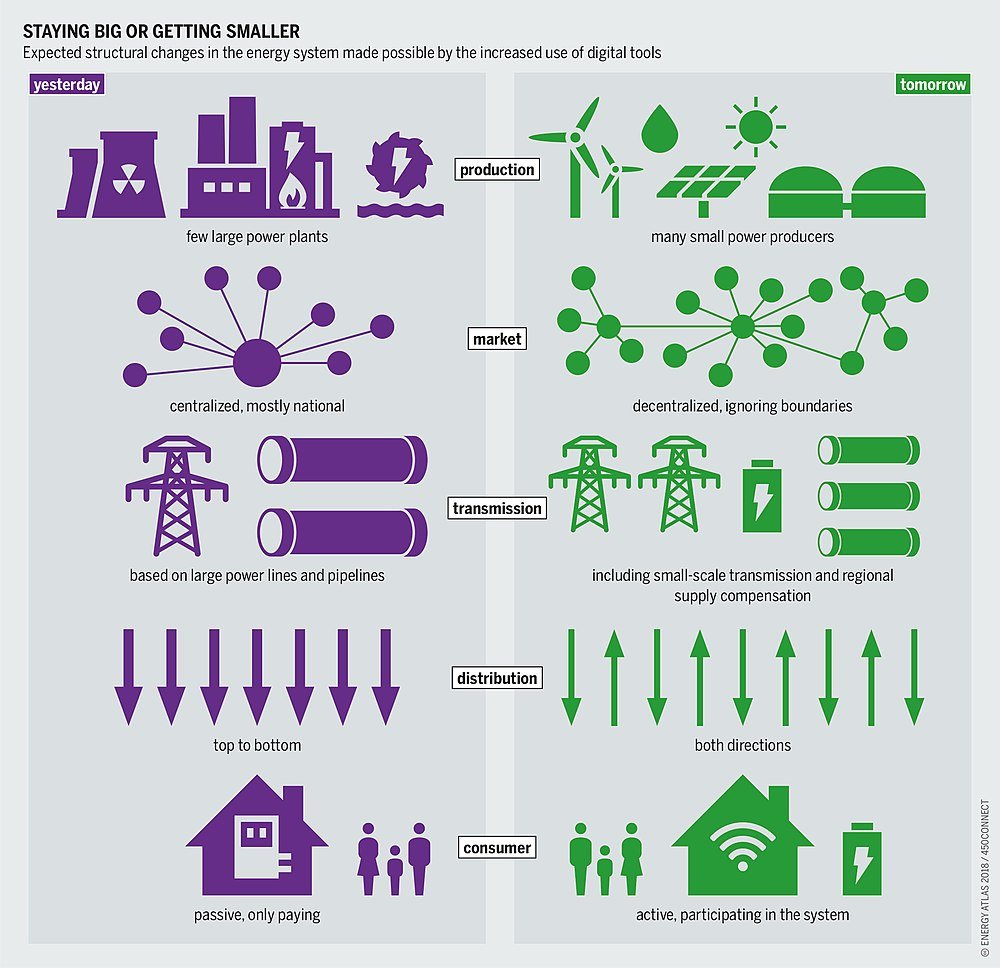Llewellyn King: Tech giants want in on electricity
Centralized (left) vs. distributed electricity systems
WEST WARWICK, R.I.
During the desperate days of the energy crisis in the 1970s, it looked as though the shortage was permanent and we would have to change the way we lived, worked and played to allow for that.
In the end, technology solved the crisis.
For fossil fuels, it was 3D seismic, horizontal drilling and fracking. For electricity, it was wind and solar and better technology for making electricity with natural gas — a swing from burning it under boilers to burning it in aeroderivative turbines, essentially airplane engines on the ground.
A new energy shortage — this time confined to electricity — is in the making and there are a lot of people who think that, magically, the big tech companies, headed by Alphabet’s Google, will jump in and use their tech muscle to solve the crisis.
The fact is that the tech giants, including Google but also Amazon, Microsoft, Apple and Meta, are extremely interested in electricity because they depend on it supplies of it to their voracious data centers. The demand for electricity will increase exponentially as AI takes hold, according to many experts.
The tech giants are well aware of this and have been busy as collaborators and at times innovators in the electric space. They want to ensure an adequate supply of electricity, but also they insist that it be green and carbon-free.
Google has been a player in the energy field for some time with its Nest Renew service. This year, it stepped up its participation by merging with OhmConnect to form Renew Home. It is what its president, Ben Brown, and others call a virtual power plant (VPP). These are favored by environmentalists and utilities.
A VPP collects or saves energy from the system without requiring additional generation. It can be hooking up solar panels and domestic batteries, or plugging in and reversing the flow from an electric vehicle (EV) at night.
For Renew Home, the emphasis is definitely in the home, Brown told me in an interview.
Participants, for cash or other incentives (like rebates), cut their home consumption, managed by a smart meter, so that air conditioning can be put up a few notches, washing machines are turned off, and an EV can be reversed to feed the grid.
At present, Brown said, Renew Home controls about 3 gigawatts of residential energy use — a gigawatt is sometimes described as enough electricity to power San Francisco — and plans to expand that to 50 GW by 2030. All of it is already in the system and doesn't require new lines, power plants or infrastructure.
“We are hooking up millions of customers,” he said, adding that Renew Home is cooperating with 100 utilities.
Fortunately, peak demand and the ability to save on home consumption coincide between 5 p.m. and 9 p.m.
There is no question that more electricity will be needed as the nation electrifies its transportation and its manufacturing — and especially as AI takes hold across the board.
Todd Snitchler, president of the Electric Power Supply Association, told the annual meeting of the United States Energy Association that a web search using ChatGPT uses nine times as much power as a routine Google search.
Google, and the other four tech giants, are in the electricity-supply space, but not in the way people expect. Renew Home is an example; although Google’s name isn’t directly connected, it is the driving force behind Renew Home.
Sidewalk Infrastructure Partners (SIP), a development fund, financed largely by Google, has invested $100 million in Renew Home. Brown is a former Google executive as is Jonathan Winer, co-CEO and cofounder of SIP.
As Jim Robb, president of the North American Electric Reliability Corporation, the congressionally mandated, not-for-profit supply watchdog, told me recently on the TV show White House Chronicle, the expectation that Google will go out and build power plants is silly as they would face the same hurdles that electric utilities already face.
But Google is keenly interested in power supply, as are the other tech behemoths. The Economist reports they are talking to utilities and plant operators about partnering on new capacity.
Also, they are showing an interest in small modular reactors and are working with entrepreneurial power providers on building new capacity with the tech company taking the risk. Microsoft has signed a power-purchase agreement with Helion Energy, a fusion power developer.
Big tech is on the move in the electric space. It may even pull nuclear across the finish line.
Llewellyn King is executive producer and host of White House Chronicle, on PBS. His email is llewellynking1@gmail.com, and he’s based in Rhode Island.
